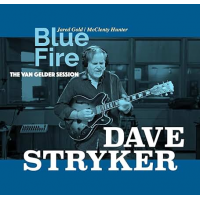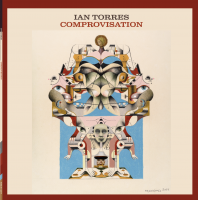Home » Jazz Articles » Album Review » Meg Okura and the Pan Asian Chamber Jazz Ensemble: Naima
Meg Okura and the Pan Asian Chamber Jazz Ensemble: Naima
Okura is an accomplished violinist, with flawless technique like that of a long line of European virtuosos including Stephane Grappelli, Jean-Luc Ponty, Didier Lockwood and the British violinists Nigel Kennedy and Chris Garrick. Her sensibility tends more towards the European style, which is dryer than the American—especially the jazz artists—and she improvises like a magically wrought cadenza, rather than the hot-blooded improvisations of say Billy Bang. But she is sharp, plays with a great deal of expression and carries the flutes of Anne Drummond and Jun Kubo like blithe spirits, melding their woody sounds with the brazenly airy glissandos of her violin. Okura's playing is full of exquisite loops and skids that seem to carry her from one plane to another. Her sharp gliding action is so ethereal that often she appears to come out of another dimension to rejoin the music of this one.
Naima is a process that inevitably leads to the magisterial suite, "The Lu Chai Suite," which was inspired by the 8th Century Tang Dynasty poet, Wang Wei, a revered artist in ancient China. As the composer informs via the liner notes, the poem has four lines, each incorporating five characters. Okura's suite follows this format, with each section or movement composed to match the structure of the poem. The first movement, "Empty Mountain," veers from the forbidden to the blissfully peaceful, especially during Okura's erhu solo. This instrument, and Satoshi Takeishi's percussion, gives the music an Oriental flavor, although at the best of times the music incorporates more American folk themes than anything else. The suite is complex, and is written in part using the Phrygian scale, obviating the necessity of the third and seventh notes. Finally in the third and most exciting movement "Sunlight," Okura takes inspiration from the Romantics including Robert Schumann, Anton Dvorak and Claude Debussy.
With this album, Meg Okura has established herself as a complete artist and a major one at that, who is unafraid to experiment and weave many musical worlds into one, using a gentle, all encompassing sensibility.
Track Listing
Naima; Hannah's Vocalese; Caprice; Afrasia, San San Nana Byoshi; Lu Chai I: Empty Mountain; Lu Chai II: Echo of Voices; Lu Chai III: Sunlight; Lu Chai IV: Green Moss.
Personnel
Meg Okura
violinMeg Okura: violin, erhu; Anne Drummond: flute; Jun Kubo: shinobue, flute; Rubin Kodheli: cello; Mamiko Kitaura: piano; Jennifer Vincent: bass; Willard Dyson: drums; Satoshi Takeishi: percussion; Dave Eggar: cello (5).
Album information
Title: Naima | Year Released: 2010 | Record Label: Self Produced
Tags
PREVIOUS / NEXT
Support All About Jazz
 All About Jazz has been a pillar of jazz since 1995, championing it as an art form and, more importantly, supporting the musicians who make it. Our enduring commitment has made "AAJ" one of the most culturally important websites of its kind, read by hundreds of thousands of fans, musicians and industry figures every month.
All About Jazz has been a pillar of jazz since 1995, championing it as an art form and, more importantly, supporting the musicians who make it. Our enduring commitment has made "AAJ" one of the most culturally important websites of its kind, read by hundreds of thousands of fans, musicians and industry figures every month.



















